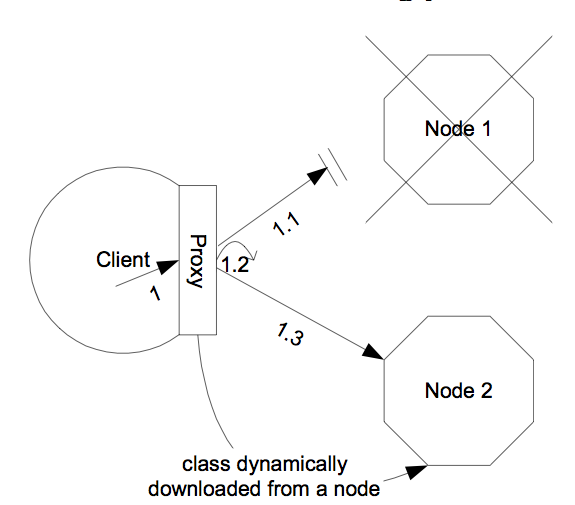Most remote services provided by the JBoss application server, including JNDI, EJB, JMS, RMI and JBoss Remoting, require the client to obtain (e.g., to look up and download) a stub (or proxy) object. The stub object is generated by the server and it implements the business interface of the service. The client then makes local method calls against the stub object. The stub automatically routes the call across the network and where it is invoked against service objects managed in the server. In a clustering environment, the server-generated stub object includes an interceptor that understands how to route calls to multiple nodes in the cluster. The stub object figures out how to find the appropriate server node, marshal call parameters, un-marshall call results, and return the result to the caller client.
The stub interceptors maintain up-to-date knowledge about the cluster. For instance, they know the IP addresses of all available server nodes, the algorithm to distribute load across nodes (see next section), and how to failover the request if the target node not available. As part of handling each service request, if the cluster topology has changed the server node updates the stub interceptor with the latest changes in the cluster. For instance, if a node drops out of the cluster, each of client stub interceptor is updated with the new configuration the next time it connects to any active node in the cluster. All the manipulations done by the service stub are transparent to the client application. The client-side interceptor clustering architecture is illustrated in Figure 16.2, “The client-side interceptor (proxy) architecture for clustering”.
Note
Section 18.1, “Stateless Session Bean in EJB 2.x” describes how to enable the client proxy to handle the entire cluster restart.
